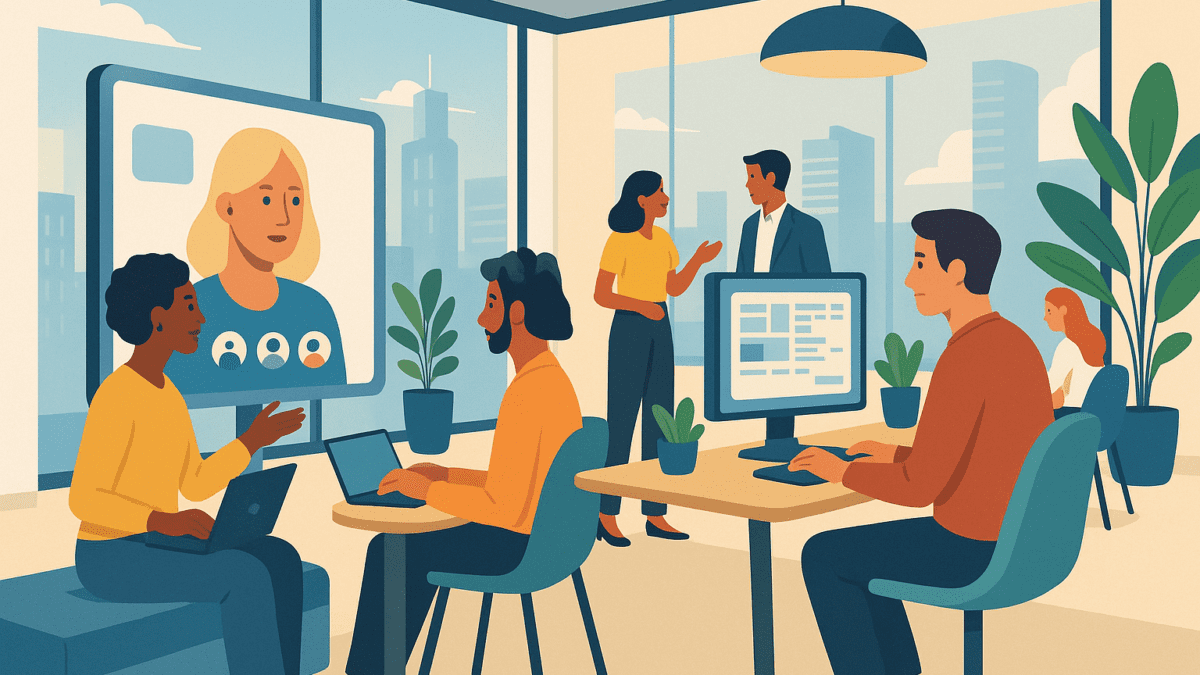Beyond Hybrid: Designing the Workplace Experience in 2025
Table of Contents
Introduction
The hybrid work model that became the default during the pandemic is no longer enough in 2025. Employees today want more than just flexibility—they seek personalized, meaningful workplace experiences that balance productivity, collaboration, and well-being. For HR leaders, this shift means redesigning work environments and policies that go beyond hybrid to address the future of employee engagement.
From Hybrid to Holistic Workplace Design
Hybrid work was once seen as a revolutionary step forward. But as organizations matured, cracks appeared:
- Collaboration fatigue from too many virtual meetings.
- Inequities between in-office and remote employees.
- Difficulty sustaining company culture across distributed teams.
The next step? Holistic workplace design—an approach that integrates physical space, digital tools, and employee well-being into a seamless experience.
Key Elements of the 2025 Workplace Experience
- Flexibility 2.0: Work on Your Terms: Employees now expect asynchronous options alongside hybrid setups. This means project-based workflows where productivity is measured by outcomes, not presence. Tools like AI-driven scheduling platforms ensure that time zones, workloads, and personal preferences align without friction.
- Smart Offices with Human-Centric Tech: In 2025, smart offices are less about fancy gadgets and more about human-centric design:
- IoT sensors optimizing lighting, air quality, and space usage.
- Desk booking systems integrated with wellness apps.
- AI-driven tools predicting when teams should gather physically for maximum impact.
- Well-being as a Workplace KPI: Well-being is no longer just a perk—it’s a performance metric. Companies are adopting:
- Mental health days as standard.
- Digital wellness dashboards tracking stress, workload, and engagement.
- AI-powered nudges reminding employees to take breaks, hydrate, or disconnect.
- Culture Without Borders: With distributed teams across continents, culture must be designed intentionally. Virtual onboarding, gamified learning, and AI-powered mentorship platforms allow employees to feel connected and valued, whether they’re in the office or working remotely.
- Sustainability as a Core Pillar: Workplace design is also becoming greener. Energy-efficient smart buildings, remote-first hiring to reduce carbon footprints, and sustainability-linked employee benefits are shaping the way organizations position themselves as future-ready employers.
Case Study Snapshot:
A global consulting firm redesigned its office strategy by reducing physical office space by 40% while investing in immersive digital collaboration hubs. The result? Employee engagement rose 18% and turnover dropped by 12% in just one year.
Opportunities for HR Leaders
HR leaders who embrace this shift can unlock:
- Stronger employee retention through flexibility and purpose-driven work.
- Higher productivity by aligning technology with human behavior.
- Employer branding advantages by standing out as future-ready.
Challenges to Overcome
While promising, this new workplace design brings challenges:
- Ensuring equitable access to resources between remote and on-site employees.
- Avoiding surveillance-style “productivity monitoring” that damages trust.
- Balancing investments in both physical spaces and digital infrastructure.
Conclusion: Beyond Hybrid Is the New Normal
The future of work in 2025 is not about hybrid vs. remote—it’s about designing the entire workplace experience. Companies that take a holistic, human-centric approach will see higher employee satisfaction, stronger business performance, and a reputation as innovators.
👉 HR leaders must start asking not just where employees work, but how they experience work.
You May Also Like:Biosensors: How Next-Gen Health Patches Are Redefining Patient Monitoring





